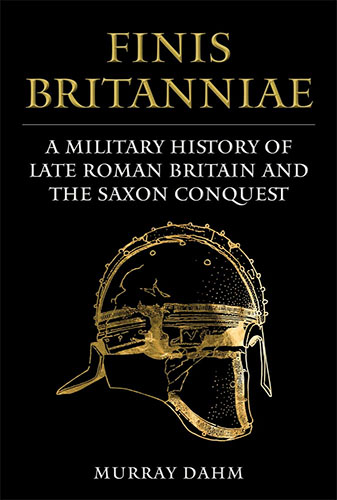
The centuries after the fall of Roman Britain are known as the Dark Ages for good reason – we are short of reliable contemporary written sources, and those we do have are somewhat contradictory. Many books have explored this period, attempting to find the truth. Murray Dahm sets out to understand the transition from Roman province to Saxon kingdoms, and gives us a thorough examination of the sources that should serve as a primer for all students of the period.
A full third of the book sets the scene by examining all the known usurpations in Britannia, from the late second century through to Constantine III in the early 400s. This gives us an introduction to all the sources, some contemporary but many written centuries after the action, or by authors far removed from northwest Europe. While demonstrating that nearly every generation seems to have thrown up another rival emperor he takes stock of the effects each had on the province afterwards. Military tactics feature, as does some description of the equipment each combatant might use. This includes references in texts, studies of Roman art, and evidence from excavation. Much is made of a list of Roman units and their shield emblems.
Next comes the turbulent fifth century with its invasions and the eventual breakdown of Roman administrative structure. All of the usual characters appear, with some discussion of who they might or might not be, since arguments have raged for decades over exact dates, or indeed the reality of figures such as Vortigern, Hengist, and Horsa. Dahm paints a believable picture of the events that we see in Gildas, Bede, Nennius, and others, steering a course through the different records.
Appendices cover the list of Roman units, the difficult use of Geoffrey of Monmouth, a study of Hengest, and of course the contentious Arthur. Perhaps the most interesting appendix is the list of further reading, spanning many older “established” works as well as more recent ones. Some of the more contentious works have been left out, such as Rupert Matthews’ “Caewlin: The man who created England” with its interpretation of the Cerdic/Cynric/Caewlin dynasty of Wessex as being Britons rather than Saxons, although Dahm does mention the theory.
The one big criticism is the choice of illustrations, added at the end. The illustrated war-gear is hardly referenced in the text, and there is a distinct lack of maps. Even if many events cannot be accurately located it would be helpful if the author had included basic maps of Britain and Gaul showing the locations of known towns and named features such as rivers. A list of known figures along with dates might also help.
While this book isn’t likely to add much to the seasoned Dark Age scholar’s knowledge, it is certainly a good starting point for those new to the subject!
